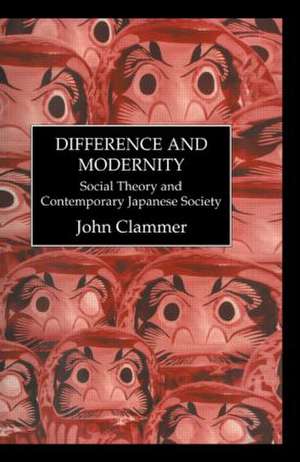Difference & Modernity
Autor Clammeren Limba Engleză Hardback – 6 ian 1995
| Toate formatele și edițiile | Preț | Express |
|---|---|---|
| Paperback (1) | 416.22 lei 6-8 săpt. | |
| Taylor & Francis – 9 sep 2016 | 416.22 lei 6-8 săpt. | |
| Hardback (1) | 999.82 lei 6-8 săpt. | |
| Taylor & Francis – 6 ian 1995 | 999.82 lei 6-8 săpt. |
Preț: 999.82 lei
Preț vechi: 1219.29 lei
-18% Nou
Puncte Express: 1500
Preț estimativ în valută:
191.33€ • 198.63$ • 159.54£
191.33€ • 198.63$ • 159.54£
Carte tipărită la comandă
Livrare economică 22 martie-05 aprilie
Preluare comenzi: 021 569.72.76
Specificații
ISBN-13: 9780710305077
ISBN-10: 0710305079
Pagini: 152
Dimensiuni: 156 x 234 x 17 mm
Greutate: 0.44 kg
Ediția:1
Editura: Taylor & Francis
Colecția Routledge
Locul publicării:Oxford, United Kingdom
ISBN-10: 0710305079
Pagini: 152
Dimensiuni: 156 x 234 x 17 mm
Greutate: 0.44 kg
Ediția:1
Editura: Taylor & Francis
Colecția Routledge
Locul publicării:Oxford, United Kingdom
Cuprins
Chapter 1 Introduction; Chapter 2 From Modernity to Postmodernity?; Chapter 3 High Culture/Mass Culture and the Experience of Late Modernity; Chapter 4 Modernity and Lifestyle in the Japanese City; Chapter 5 Natural Being/Social Being; Chapter 6 Modernity and the Self; Chapter 7 Hierarchy, ‘Group’ and Individual; Chapter 8 Social Theory and the Part icularities of Asian Modernity;
